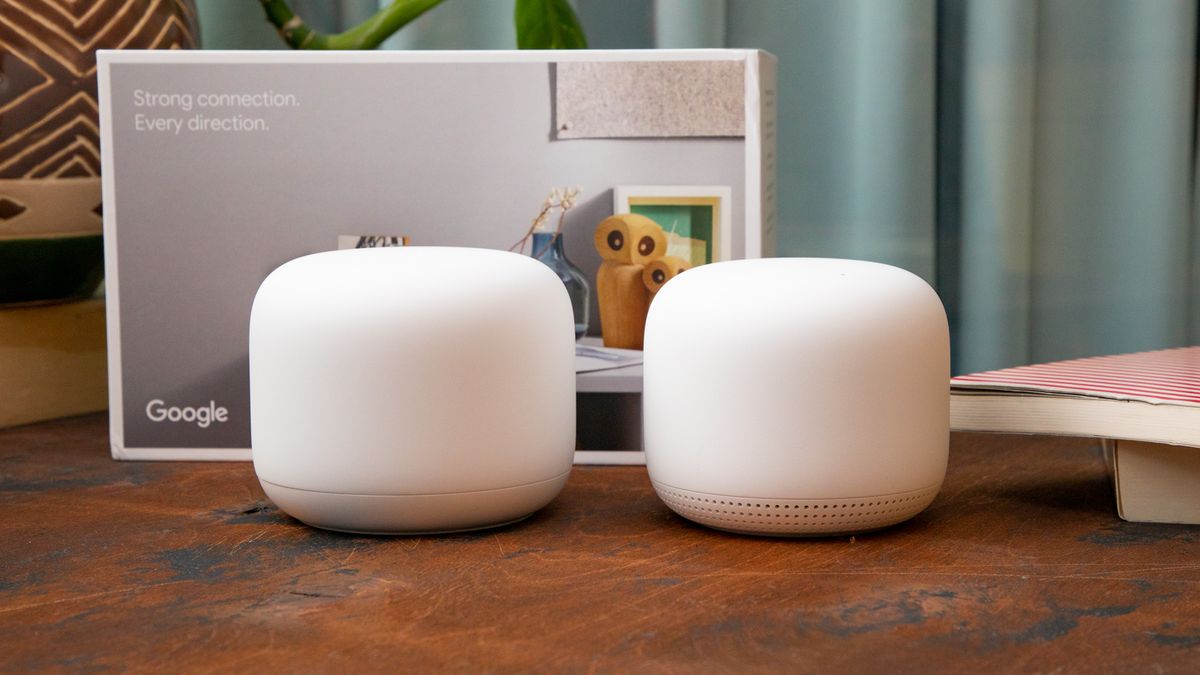
From the depths of the Federal Communications Commission’s (FCC) database, a new filing was discovered for a new Google Nest Wi-Fi router that supports Wi-Fi 6E.
The filing is available for the public to read through (opens in new tab), but it’s all test results, some reports, and a few letters. Unfortunately there are no images of the new Google Nest Wi-Fi device apart from a label (opens in new tab). What we do know is the model number will be G6ZUC and the different wireless technology (opens in new tab) standard that will be housed with the device.
Wi-Fi 6E support confirmed
Reports of a Google Nest Wi-Fi router supporting Wi-Fi 6 have been floating around since June. Wi-Fi 6 is the current wireless standard that operates across two different frequency bands: 2.4Ghz and 5Ghz. Having two bands allows the standard to support multiple devices without having to, ideally, sacrifice speed. However in a situation with lots of devices, that ideal scenario becomes less likely if the bandwidth becomes is full. This results in lower speeds overall.
Meanwhile, The Wi-Fi 6E ups the ante by offering a third 6Ghz band, which is the major difference between Wi-Fi 6 vs Wi-Fi 6E. The latter is much faster than the former and allows for more devices to hop on the connection, but it doesn’t represent a strictly generational upgrade over the former.
Still, by having that additional lane, high speed connectivity is more likely. Google’s recent routers don’t support Wi-Fi 6, causing it to fall behind some of its competitors. Amazon, for example, has its Eero 6 router fully supporting Wi-Fi 6. With this new Nest device, Google is essentially playing catch up.
While the Wi-Fi 6E support is arguably the most important update, the Bluetooth Low Energy (LE) support is still noteworthy. This technology takes the original Bluetooth standard and optimizes it for lower power operation. According to the official website (opens in new tab), Bluetooth LE can transmit data across 40 channels on its 2.4Ghz frequency band. Compared to Bluetooth Classic, this new standard shares the same bandwidth albeit with fewer channels.
Also seen in the FCC filing is support for the Thread protocol; a wireless standard that allows “smart home devices [to] work together.” It does this by creating a mesh network by using each smart home device, including routers, as an access point. Devices on a Thread network communicate with each other rather than a central hub and this results in high quality connections. Benefits include lower latency and reduced power consumption.
A release date is unknown at this point. It’s entirely possible the new Google Nest router could launch later this year, but Fall is looking busy for the tech giant.
Google’s Fall launches
Fall 2022 is slated to be a pretty heavy launch window for Google. The highly anticipated Android 13 operating system is expected to release in September and recent reports point to the Pixel 7 phone launching that same month. And October could see the launch of the Pixel Fold smartphone and Pixel Watch (opens in new tab), according to some leaks.
Google hasn’t scheduled any major events for the Fall or early Winter where they can reveal the new Nest router. Plus, leaks for the new Nest router haven’t been circulating as far as we know. Ultimately, everyone will just have to wait and see, but we hope it’s soon. The more time Google takes to release its Wi-Fi 6E enabled router, the wider the gap gets with competitors.
If you’ve been waiting for a new Google Nest Wifi router to drop and are tired of dropped connections and slow speeds, check out the best Wi-Fi 6 router while we wait for more Wi-Fi 6E support for devices and routers.




















